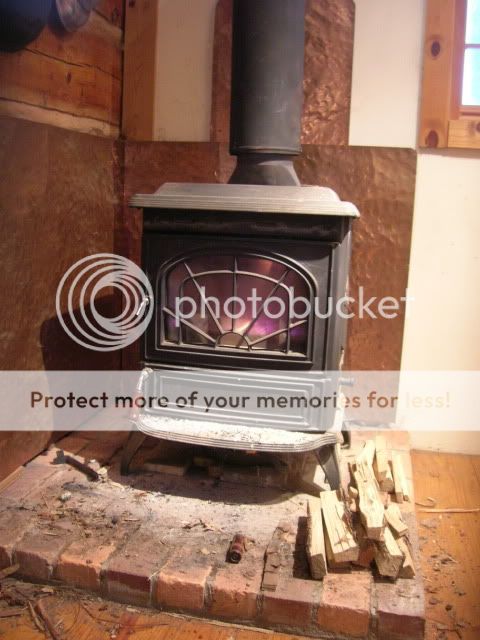I am an old-time wood burner guy. I built a log home in Georgia in 1988 and installed a Vermont Castings Resolute in the living room. The pipe went up 8 feet, did a 90, went through the wall, did another 90 and went up above the roof.
This was a great wood stove! I wish I still had it. Of course this was prior to the big EPA changes in all the wood stoves. The total length of pipe was about 20 feet.
This stove was easy to light and just burned great.
In 1999 I installed a new Waterford stove at my new log cabin in the NC mountains. I did the install the same way, a 90 to go through the wall, another 90 to go up above the roof, total length of pipe about 20 feet.
This Waterford, a 43,000 BTU stove, is nowhere near the performer that my Resolute was. This stove is very difficult to light. I have a stove top thermometer and it has almost never gotten over 500 degrees. Often it is hard to get it up to 400 degrees, no matter how dry the wood is or how small it is split.
Next year I am going to build an addition and get a new, big wood stove. I was down at the Jotul dealer in Asheville and told him about the Waterford. He said that I had screwed up the pipe install, as the new, or, after 1989, EPA compliant wood stoves did not do well with two 90 degree bends in the pipe. In fact, he was surprised that the stove worked at all.
Is this true? Based on what he told me I am planning a vertical run of pipe for the new stove with no bends.
This was a great wood stove! I wish I still had it. Of course this was prior to the big EPA changes in all the wood stoves. The total length of pipe was about 20 feet.
This stove was easy to light and just burned great.
In 1999 I installed a new Waterford stove at my new log cabin in the NC mountains. I did the install the same way, a 90 to go through the wall, another 90 to go up above the roof, total length of pipe about 20 feet.
This Waterford, a 43,000 BTU stove, is nowhere near the performer that my Resolute was. This stove is very difficult to light. I have a stove top thermometer and it has almost never gotten over 500 degrees. Often it is hard to get it up to 400 degrees, no matter how dry the wood is or how small it is split.
Next year I am going to build an addition and get a new, big wood stove. I was down at the Jotul dealer in Asheville and told him about the Waterford. He said that I had screwed up the pipe install, as the new, or, after 1989, EPA compliant wood stoves did not do well with two 90 degree bends in the pipe. In fact, he was surprised that the stove worked at all.
Is this true? Based on what he told me I am planning a vertical run of pipe for the new stove with no bends.




